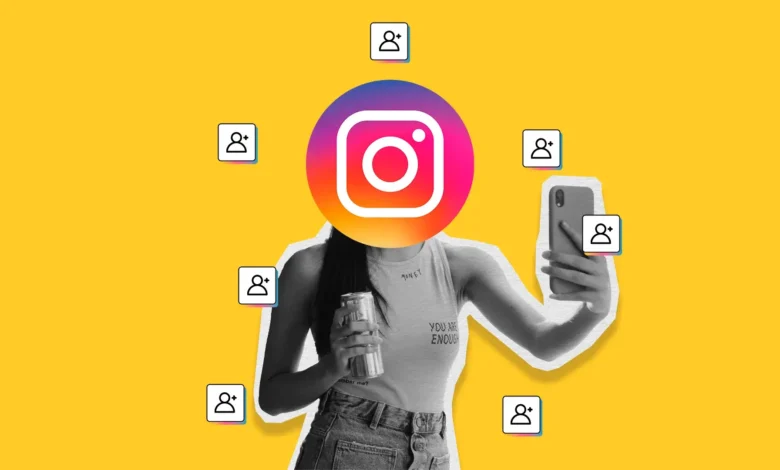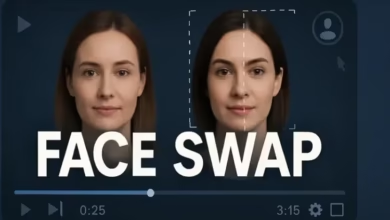The Importance of Tracking Your Recent Follows on Instagram

In today’s digital era, Instagram has become much more than a photo-sharing platform—it’s a mirror into our interests, social circles, and online behavior. Whether you’re a concerned parent, a curious friend, or a digital marketer trying to understand audience behavior, knowing who someone recently followed on Instagram can offer useful insights. With ever-changing algorithms and privacy controls, tracking recent follows isn’t always straightforward. But with the right tools and techniques, it’s possible to gain a better understanding of follow activity—completely anonymously.
In this article, we’ll break down why tracking recent follows on Instagram matters, how Instagram handles follow data, what’s visible to users, and how tools like Dolphin Radar help streamline the process without requiring any login or personal data.
Why Do People Want to Track Recent Follows?
There are various legitimate reasons people want to know who someone recently followed on Instagram. For example:
- Parents or guardians may want to ensure their children are not engaging with inappropriate or risky accounts.
- Romantic partners might want to understand their significant other’s online behavior, especially when trust issues are involved.
- Friends may simply be curious about new connections.
- Marketers and influencers can use follow patterns to analyze trends, competitor behavior, or shifts in niche interests.
In all these cases, the intention isn’t necessarily intrusive—it’s about being informed. And the desire to Track Instagram Recent Follows has only grown as our digital identities become more deeply tied to who we engage with online.
What Does “Recently Followed” Mean on Instagram?
Instagram does not provide a direct “recently followed” filter on anyone’s profile, which can make it challenging to determine the exact order of follow activity. When you visit someone’s “Following” list, the accounts may appear in an arbitrary or algorithmically driven order. This list is not sorted by date and does not reflect the actual sequence of who was followed when.
Because of this limitation, Instagram users can’t easily determine who was recently followed—especially if the account follows thousands of others.
What Can You See Through Instagram’s Native Features?
Instagram offers a few built-in features that give some insight into follow activity, but with major limitations:
- Following Lists: You can view who someone follows, but it’s not displayed in chronological order.
- Activity Feed: You used to be able to see what your friends liked and who they followed in the “Following” tab under Activity, but that feature was removed in 2019.
- Mutual Followers: You can see if you share any mutual follows with someone, but again, no timeline is given.
Simply put, Instagram’s native options don’t allow for tracking recent follows efficiently or accurately.
Manual Methods: Are They Effective?
Some users try to manually monitor accounts by:
- Taking regular screenshots of a person’s following list
- Using spreadsheets to compare differences over time
- Refreshing the profile frequently to spot changes
While these methods may work in theory, they are time-consuming and unreliable—especially if the person follows or unfollows multiple accounts regularly. Also, Instagram does not notify users when they follow or unfollow someone, which makes manual tracking even harder.
The Smarter Way: Using Dolphin Radar
Instead of going through these hassles, you can use specialized third-party tools like Dolphin Radar to Track Instagram Recent Follows easily and anonymously.
Dolphin Radar doesn’t require a login or personal information. All you need to do is enter the Instagram username of the person you want to track, and the tool shows you the most recently followed accounts. It’s user-friendly, discreet, and completely anonymous—making it ideal for those who want a simple and effective solution.
Behavioral Clues That Suggest Recent Follows
Sometimes, you might be able to make educated guesses about recent follow activity by looking at:
- New likes and comments: If someone suddenly starts liking or commenting on posts from a specific account, it may indicate a recent follow.
- Tagged stories or collaborations: New tags in stories or posts can point to fresh social connections.
- Changes in bio or follower count: A spike in followers or new mentions could suggest network growth through recent follows.
However, these clues are speculative and far from accurate. They don’t replace a tracking tool if you’re looking for reliable data.
Why Do Instagram Follow Lists Appear Out of Order?
If you’ve tried to manually check someone’s follow list, you’ve probably noticed that the order seems random. Instagram uses a complex set of rules, which may include:
- Algorithmic sorting based on mutual interactions
- Device type or location differences
- A/B testing different display formats for different users
- Sorting by most interacted accounts (rather than newest)
Because of these inconsistencies, relying on Instagram’s UI alone to track recent follows is nearly impossible.
Privacy Tips for Instagram Users
If you’re concerned about your own follow activity being monitored, here are a few basic steps to help maintain your privacy:
- Switch to a private account: This restricts who can see your follow list to approved followers only.
- Limit third-party access: Revoke access to unknown apps that may be using your data.
- Review your followers: Remove suspicious or inactive accounts to tighten control.
- Think before you follow: Remember, every action you take leaves a trace, even if it’s not always publicly visible.
Frequently Asked Questions (FAQs)
1. Can you see who someone recently followed on Instagram?
Not directly. Instagram doesn’t display the order in which accounts were followed. To see recent follows, you’ll need a third-party tool like Dolphin Radar.
2. Is Dolphin Radar safe and anonymous?
Yes. Dolphin Radar doesn’t require login credentials or personal information. It’s designed for anonymous usage and doesn’t interact with the target account.
3. Why doesn’t Instagram show follow lists in order?
Instagram’s algorithm may prioritize interactions, mutual connections, or other metrics over chronological order. This makes it difficult to determine recent activity.
4. How often does Dolphin Radar update follow data?
Dolphin Radar checks and updates follow data regularly to ensure you’re getting the most accurate insights possible, depending on how frequently the tool is used for a specific account.
5. Can I track my own follow activity using Dolphin Radar?
Yes. You can enter your own username to see which accounts you’ve recently followed. This can be useful for self-auditing or social media management.
Conclusion
Understanding who someone recently followed on Instagram can offer valuable insights into their online interactions, interests, or social behavior. While Instagram itself doesn’t provide a built-in feature to view recent follows in order, tools like Dolphin Radar fill that gap efficiently. Whether you’re looking out for a loved one, managing your brand, or just satisfying curiosity, the ability to Track Instagram Recent Follows anonymously and without logging in is a game-changer.
Instead of relying on guesswork or time-consuming manual methods, Dolphin Radar gives you a reliable and secure way to track follow activity. Just enter a username, and you’re good to go—no password, no app installation, and no account access required.




